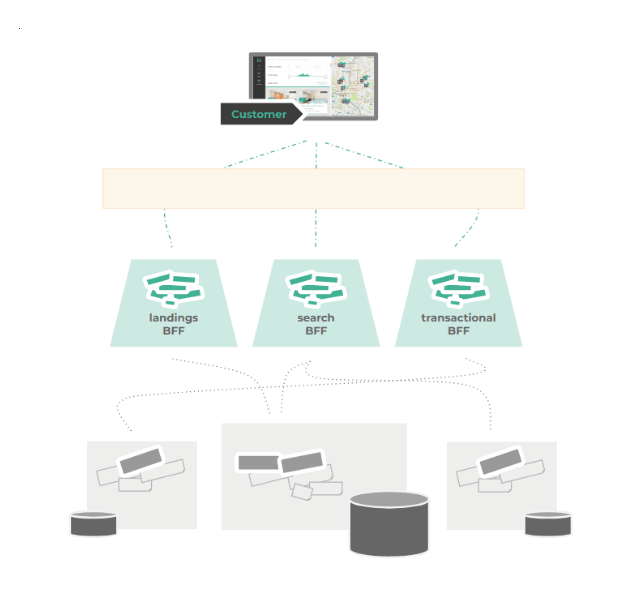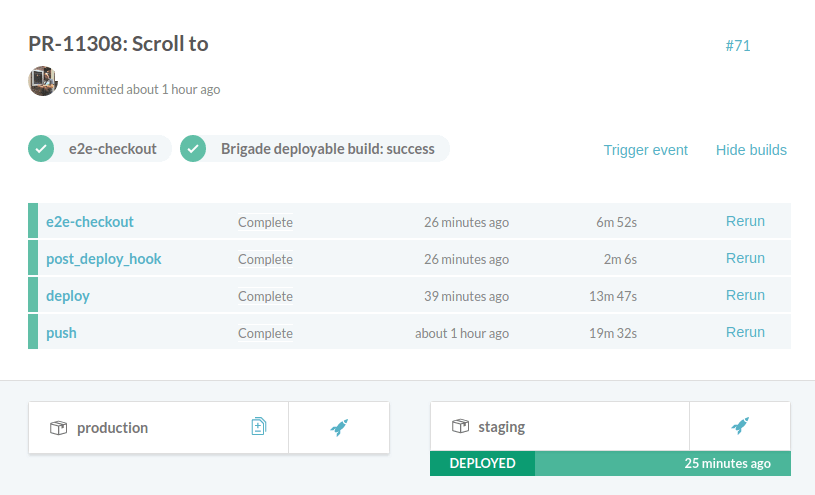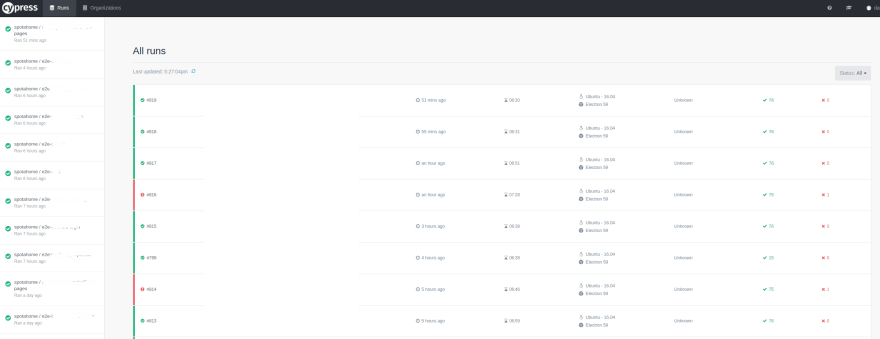And here comes my first post ⭐
In this post I'll share our learnings for testing our frontend platform at Spotahome and how we moved from Selenium to Cypress. You can find the complete post in our blog in case you want to read further.
Our front-end architecture is built up based on the BFF approach using Node + React, that combines the speed of JavaScript and uses new ways of rendering websites, making them highly dynamic and responsive to the users. For it, we make use of GraphQL to request data to the backend. GraphQL was developed to cope with the need for more flexibility and efficiency that developers experience when interacting with REST APIs, making the workflow much more efficient.
The test tool
A while ago we decided to start using Cypress, a tool that intends to overtake Selenium (or to make you forget about it right away), by ripping off all its setbacks such as the set up and debugging. If you want to dive deeper into this comparison, here you can read further.
Cypress is a testing tool built for the modern web. One can see lots of similarities among them, but the benefits and constraints you will face are quite different depending on which one you use. If what you’re seeking for is easiness of setting up and debugging, Cypress can be a pretty good match.
Cypress is an open source test runner that lets you write tests in JavaScript code. You can checkout their repository and contribute to their mission if you feel so.
In our case, we made the shift from Selenium to Cypress for several reasons. The most important one, it seemed to be pretty easy to set up and work with, and that enabled us from QA to scale testing efforts by spreading its use among QAs and devs. Since it uses JavaScript, our dev team welcomed it and started to use it almost friction-less.
The technology underneath
Cypress is written in JavaScript and lets you write tests in JavaScript. One thing to keep in mind is that Cypress is built up on top of Mocha, so if you are already used to write test scripts using Mocha as your test framework, you are likely to find some old friends here.
From Mocha, Cypress adopts its BDD syntax which fits nicely with both integration and unit testing. Another bundled technologies that Cypress comes with are Chai, Chai-jQuery, Sinon, and Sinon-Chai.
Running the tests
When running the test in GUI mode, we see the following:
What Cypress does is open a browser, then on the left you see the ‘live log’ which reflects everything the browser does during the test, and on the right you have the application under test
Worth to mention here that Cypress is not an outsider tool that communicates with the browser through an API, but that it runs directly in the browser, and this makes it to be so close to the web application under test that you can do things that you can’t do in Selenium, such as stubbing DOM APIs.
One of the key features here is the debuggability. When the test finishes or fails, the state is not reset, meaning that you can hover around the ‘live log’ to see what or where was Cypress actually doing at that moment in time -a screenshot is displayed for that moment in time for every action. You can even open the browser console and get a full description of the steps you select on the log. This feature has boosted the whole process of test development so much that we can’t go without it now.
Setting up the CI
For our CI system we use Brigade, which is an event-based tool for running automated tasks on the cloud. Our colleagues from the DevOps team wrote a series of posts about how this works, so in case you are interested you can take a deep dive here.
As commented at the beginning of the post, we split our application in different BFFs, which lets us to build and deploy them independently, making the release process swifter and more easy to scale.
All of these BFFs have at least one e2e test repository attached, that will be triggered as a different event every time a pull request is merged.
This case above illustrates the typical series of events that happen when merging a new Pull Request into our staging environment -BFF pipeline. First comes the push event (including unit tests 😍), then the deployment to the staging environment, and finally a post_deploy_hook triggers the configured e2e tests. We’ve got Slack integrated into this loop to notify us of every step and warn us in case anything went wrong.
The e2e tests are stored in a repository of their own (accounting to more than 15 repositories). We commit every change on e2e test code to those repositories to create a new Docker image that will be grabbed and executed by the BFF whenever the event comes.
Focusing on the e2e test event, the command we use to run the tests is:
$ cypress run --record --group 4x-electron --parallel --ci-build-id ${buildId}
Briefly analyzing the params:
- record: Sends the video recordings to Cypress Dashboard to keep track of the runs
- group : Group recorded tests together under a single run
- parallel: Enables parallelization of the tests
- buildId: Necessary to defining a unique build or run
Wait what? Sends the video recordings to a dashboard?
Cypress Dashboard
The last part of the journey. Cypress Dashboard is a service that allows us to access to recorded tests, being pretty useful when we run them on the CI. It gives us information about all the test runs triggered, including logs, screenshots and videos.
Even though we could go without the Dashboard, we found it pretty helpful and use it widely -we are on a paid plan that allows several of our engineers to have access to it and work in a more efficient way.
The big win here is that we can be aware of the state of the application quite fast, and we can address any issue right away whenever anything fails. Once the failure is revealed and the potential impact calculated, we either fix the issue and test it again ASAP or we snooze the failing assertion until it gets fixed, so that we don’t introduce noise in the pipeline.
This is all, I hope you find it useful! In case you had any question or suggestions they are more than welcome 💚








Top comments (0)